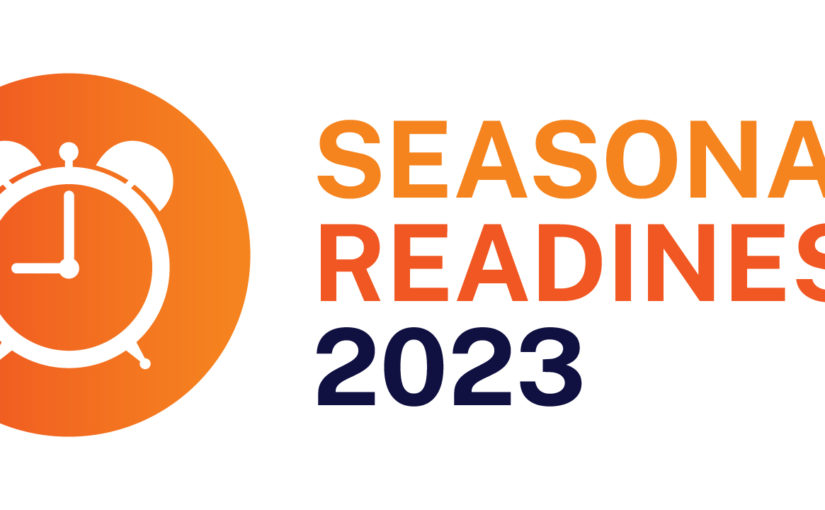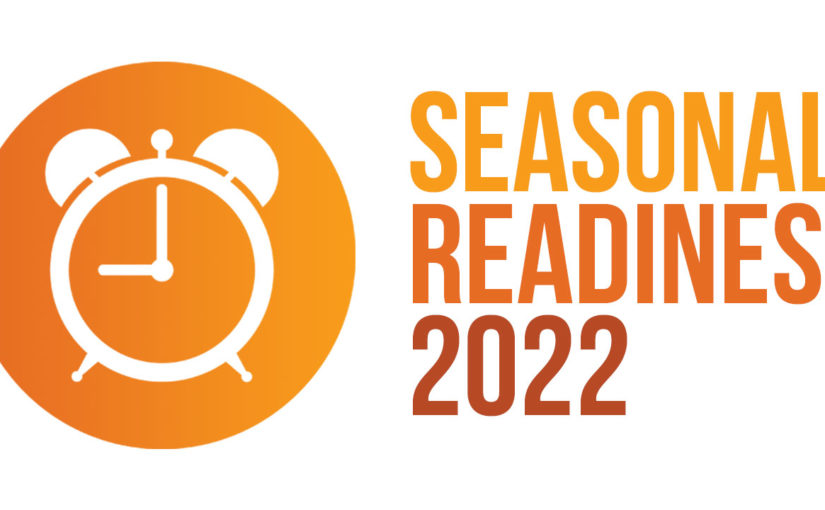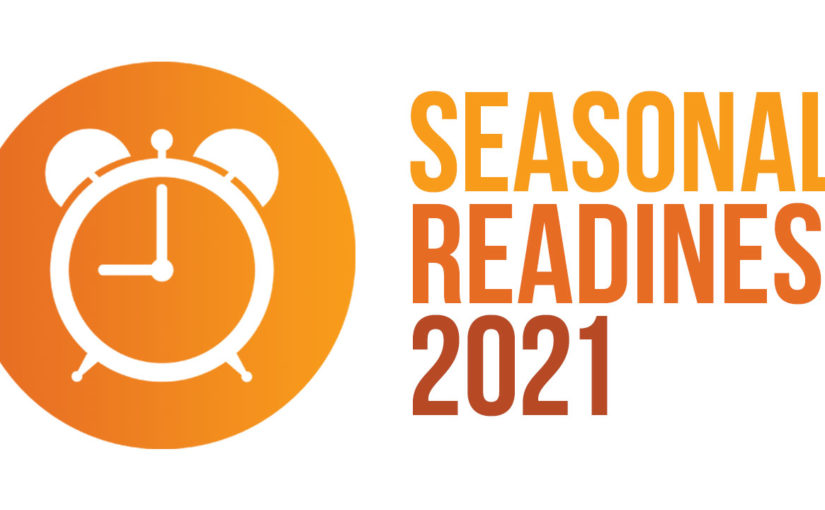Seasonal Readiness 2024
Seasonal Readiness 2023
Incentives and Innovation Charge Up Battery Projects in New England
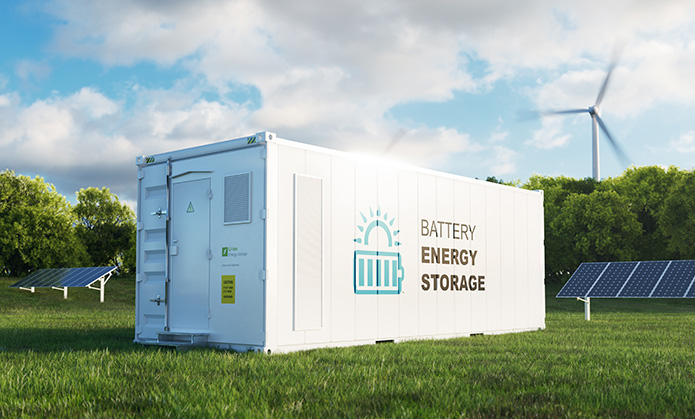
The benefits of living in the storage decade currently may be greatest in New England, where utility and government programs, and innovations in storage technology, help organizations reach their sustainability goals while improving facility resiliency and decreasing operations, maintenance and energy expenses.
New England facilities can reap energy storage benefits such as on-bill savings and grid services revenue without the costs or responsibilities of ownership by partnering with energy-storage-as-a-service (ESaaS) providers such as CPower. Commercial and industrial organizations can avoid the interconnection engineering, capital investment and O&M responsibilities associated with a battery project by having an ESAS provider design, install and operate the battery on their behalf.
Meanwhile, at a macro level, behind-the-meter storage enables the renewable energy transition from more emission-intensive options while supporting the reliability of the grid, thanks to the foundation of state policies and programs that support battery adoption. For example, Connecticut’s Energy Storage Solutions program offers organizations upfront incentives for installed battery capacity plus performance-based incentives for dispatching the battery capacity to the grid.
Federal incentives available under the Inflation Reduction Act could accelerate the adoption of batteries even more — Bloomberg NEF projects the landmark legislation to drive the development of 111 GWh of energy storage. The IRA includes a stand-alone Investment Tax Credit for energy-storage projects, which effectively reduces a storage project’s costs by 30%.
Battery capacity in the US has already more than tripled since the start of 2021 and Massachusetts has been one of the states where it has grown the fastest. According to Utility Dive, Massachusetts now ranks fifth nationally in battery capacity due to the combination of a state requirement that solar projects of more than 500 kW be paired with energy storage, performance incentives for behind-the-meter active demand reduction, including battery storage, and programs that incentivize time-shifting of clean-energy generation like wind and solar.
On-site behind-the-meter storage can also provide on-bill savings for New England organizations through reduced demand charges on utility bills and reduced capacity tag charges on supply bills. For example, a healthcare facility in Connecticut projects $186,000 in on-bill savings in the first year after installing a battery through CPower. Importantly, these on-bill savings are in addition to the performance incentives paid by utilities and grid operators.
Storage projects can help organizations achieve their sustainability goals as well by cutting regional emissions. A higher education institution in Massachusetts with a 1.3 MW 3-hour battery reduced annual emissions of carbon dioxide (CO2) by nearly 46 metric tons, which is equivalent to not burning 50,364 pounds of coal per year, through targeted charge and dispatch of the battery to maximize energy use from cleaner resources.
As the storage decade continues, solutions like CPower’s artificial-intelligence-driven EnerWiseTM Site Optimization software can help New England organizations maximize the financial return and sustainability benefits of their batteries and other distributed energy resources by analyzing and automatically executing the most efficient demand-side energy management strategies.
To learn more about CPower’s EnerWise Site Optimization solution or energy storage services, call us at 844-276-9371 or visit CPowerEnergy.com/contact.
Darren Hammell
Darren is CPower’s Director of Energy Storage. He is also the former Founder and CEO of Princeton Power Systems as well as a member of the Board of Directors of Andluca Technologies (PV-powered “smart” windows). He was a “Gerhard R. Andlinger Visiting Fellow” at Princeton University’s Andlinger Center for Energy and the Environment where he taught “Energy Innovation and Entrepreneurship.”
Seasonal Readiness 2022
State of the New England Energy Market in 2021

What will New England do to appease states that are angered at the policies they feel affect their desired fuel mixes? In this webinar, CPower’s Nancy Chafetz examines this key topic and will explore other critical regulatory issues and market proposals that are sure to shape the New England Energy Market in 2021 and beyond.
This webinar is part of CPower’s annual State of Demand-Side Energy Management in North America series. To learn more about the series or to register for other webinars for different US energy markets click here.
How Will MOPR’s departure affect the ISO-NE market?
The Minimum Offer Price Rule (MOPR) exists to prohibit new capacity resources from offering into the market below their true, i.e. unsubsidized, costs.
MOPR has garnered its share of controversy since it was enacted a decade ago. The rule was introduced to address the concern about “buyer-side market power.” The concern is that an entity on the load side may have an incentive to offer supply into the capacity market at below-market prices in order to depress clearing prices, thus reducing capacity costs. This may degrade the economics for merchant players to the point where new capacity cannot be attracted when needed and existing resources that are needed for reliability may exit the market prematurely.
States in New England have essentially argued in recent years that MOPR infringes on their rights to determine their generation fuel mixes and unnecessarily keeps renewable resources from clearing the capacity market, requiring consumers to pay twice for capacity–once through a state procurement and a second time to purchase capacity to meet ISO-NE capacity requirements, which the state-procured resources cannot meet due to the MOPR.
In an interview on April 5, 2021, FERC Chairman Richard Glick sided with the states when he noted, “FERC has a responsibility under the Federal Power Act, essentially, to defer to the states, in terms of state decisions about what the generation resource mix should be like. But instead, we’ve implemented these MOPRs, at least in the three Eastern RTOs that have mandatory capacity markets, in a matter that really attempts to block the state clean energy policies or state energy policies in general.”
The issues at stake with MOPR are not going to be solved overnight but ISO-NE has started working on changes this month (June 2021). As part of this effort, ISO-NE intends to eliminate MOPR with Forward Capacity Auction 17 (2026/27 commitment period).
While the elimination of MOPR will help renewable resources to clear the capacity market and earn capacity revenues, without accompanying changes to address the price depressing effect of allowing resources to clear at prices below their true costs, the expectation is that capacity prices will plummet.
With a few thousand MWs of state-procured off-shore wind already on the books, and thousands of MWs yet to come, it is reasonable to expect these MWs will start showing up in Forward Capacity Auctions once the MOPR has been eliminated. That said, a set of contested changes pending at FERC could facilitate off-shore wind’s entry into the market a bit earlier if FERC sides with NEPOOL stakeholders over ISO-NE.
In any case, ISO-NE does feel it is important to make accompanying changes that are geared toward maintaining competitive pricing in the capacity market when MOPR goes away.
SOTM 2021 Webinar Series
Seasonal Readiness 2021
Demand-side 2021 New England: A Commercial and Industrial Guide to Managing Energy in 2021 (Webinar)
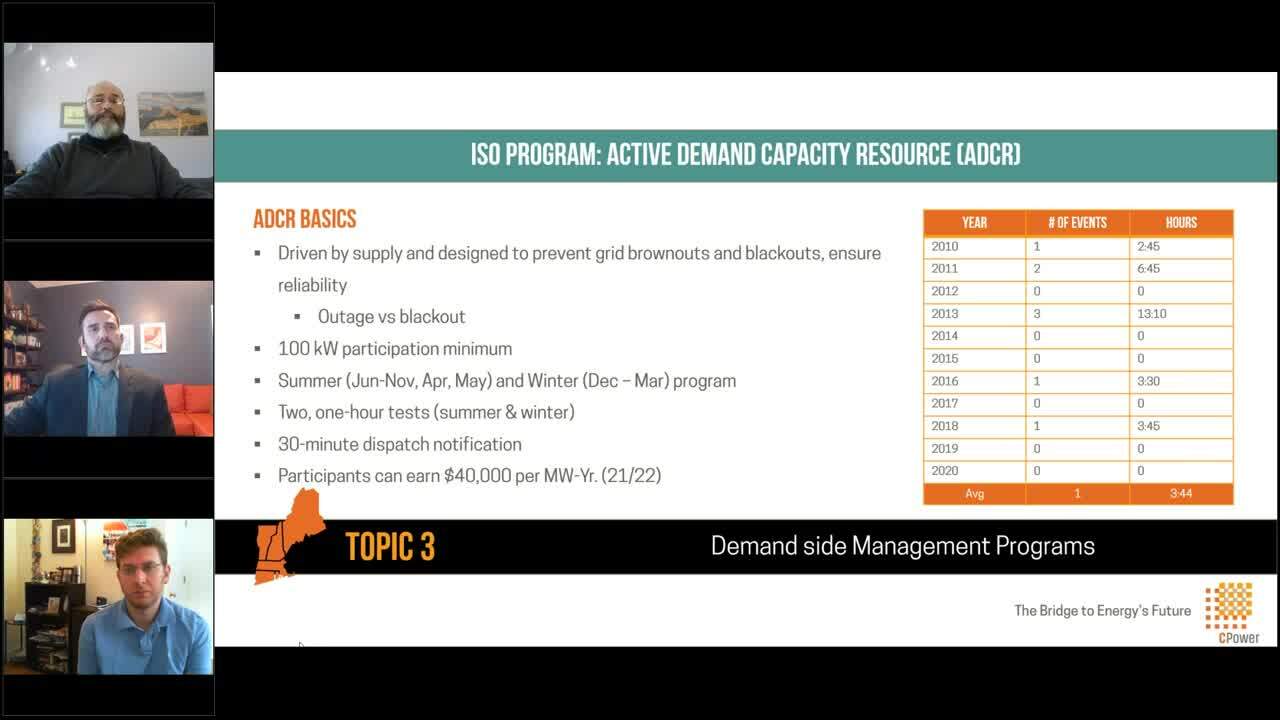
Even before the onset of the COVID-19 lockdown, 2020 was expected to be a year of change in New England’s energy market. In this hour-long webinar, CPower’s resident experts will explain how the region is working its way through the pandemic’s maze and how organizations are reexamining their energy management strategies in search of optimization for an increasingly uncertain future.



